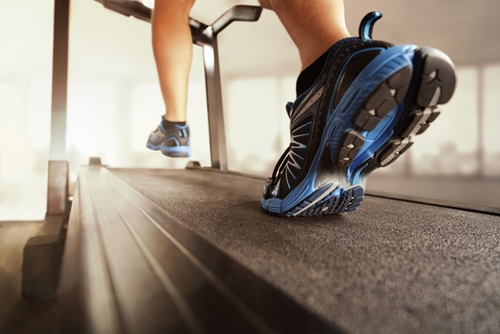
Selecting the right pair of running shoes

Whether you have a membership to a local fitness center, spend your time exercising on a variety of home gym equipment of prefer to simply hit the open road to get your physical activity in, you’re probably already aware that a good pair of running shoes are one of the most integral investments you can make in your personal fitness. Of course, arriving at this knowledge presents an entire host of questions regarding how to select the pair of shoes that is perfect for you. The reality of the situation may be that there are a vast variety of shoes out there that suit your needs, but the odds are decent that there’s an even broader grouping of shoes that won’t aid in your fitness and could even lead to increased risk of injury. If you’re starting a new exercise routine or are simply in the market for a new pair of shoes, take a look at these few tips for determining which pair is right for you:
Believe the hype (sometimes)
One of the most frequently discussed trends in running shoes over the past few years has been the emergence of minimalist or ‘barefoot’ shoes. These sneakers simulate the experience of running barefoot by offering a shoe that holds a very small degree of separation and cushion between your foot and the ground. While it may seem somewhat counterintuitive, this can actually lead to having stronger, more road-ready feet by causing you to build strength through absorbing more impact. First and foremost, these shoes are often actually a wonderful surprise for runners in that they can yield considerable results in terms of foot strength. That said, using them improperly can result in injury or other unpleasant results. If you’re currently wearing a basic trainer or running shoe for most of your runs but are interested in moving to a minimalist sneaker, Competitor recommends finding an intermediate sneaker to train on first. This will allow your feet and legs to get used to absorbing more impact gradually without rushing into the process. Once you’ve run on these for a few months, you may be ready to move to a minimalist sneaker.
Consult an expert
It might seem like a slight degree of overkill, but having an expert observe your running form can actually be incredibly beneficial when purchasing new shoes. Most specialty running stores or fitness goods outlets will have someone on staff capable of performing what’s known as a gait analysis. A gait analysis consists of having you get on a treadmill or run down a short track for a few seconds while a professional shoe expert observes. The idea behind this sort of observation is that the individual watching you will be able to recognize any degree of overpronation or other misstep in your stride. Upon doing so, they will be better informed regarding your running stance and able to select a shoe that matches up well with your bodily support needs. It’s worth noting that this process may be beneficial even for seasoned runners with a knowledge of their running form, as stride and stance can change over time due to growth, injuries and compensation.
Marching arches
One of the best ways to determine what kind of running shoe is best for you, according to REI, is by observing your arch. In order to do this, the outfitter recommends leaving a wet footprint on cement or a rug and observing where your arch falls. Those with a broad, uncurving footprint have little to no arch, while a very narrow and curved footprint indicates a high one. This information can be incredibly beneficial when brought to a salesperson.
